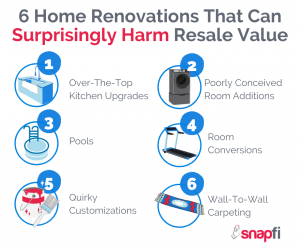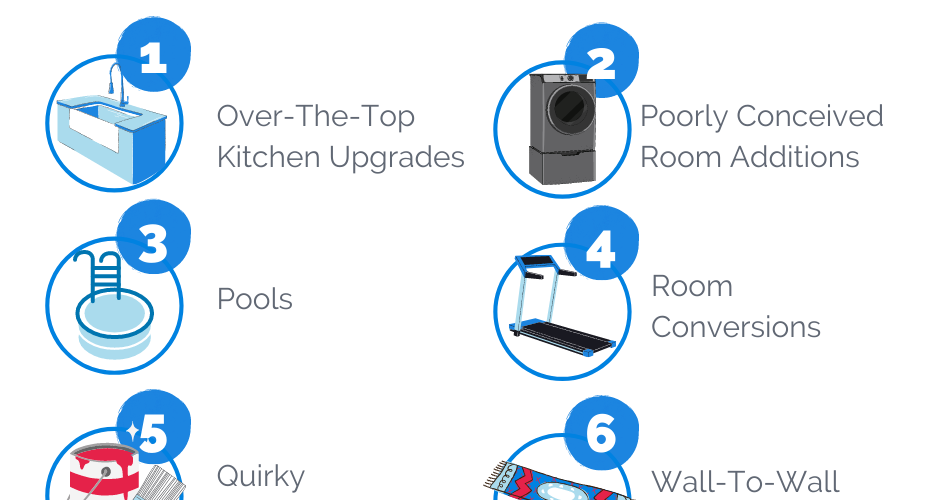

When considering selling a home, many owners believe that making upgrades throughout the house will increase the probability of the house going fast on the market. In some cases, home improvements are unavoidable sometimes due to structural flaws or old plumbing. The issue with updating a home comes when personal taste influences the rebuild.
Statistically, there are some renovations that will have a strong return on investment, when done well. Such as bathroom or kitchen updates. Homeowners should avoid changes that are not supported by the local market. Having too many luxurious upgrades can potentially make the house the most expensive in the neighborhood which is something to avoid in real estate.
Before rolling out the new blue prints, consider if your home improvement ideas are necessary or going to bring the resale value of your home down.
1. Over-The-Top Kitchen Upgrades
Kitchens are typically the most desirable part of a home, many potential buyers will base their decision on the kitchen of a house. A high end kitchen in a home that is considered to be not as high end will stick out as a sore thumb to those touring. Kitchen renovations should not exceed 25% of the home’s value, otherwise spending all the money on the upgrades may not gain that much more of an increase on the overall price of the home.
2. Poorly Conceived Room Additions
When considering adding more rooms, it is well advised to speak to a professional about the new layout concept. For example, no one wants to live in the bedroom that guests have to walk through to get to a bathroom. Getting multiple opinions may open ways to include hallways that do not disrupt the layout of your new addition. Another problem would be considering to add more square footage through another story, but in a neighborhood with all single stories, the two story home will stick out.
3. Pools
The saying goes: “Everyone loves a pool, but not the maintenance.” Pools require a big budget to be installed and an even bigger budget to maintain. For many families, pools also are a safety hazard to take into consideration. There is a large risk when installing in a pool when it comes to getting your return in investment. Let the new owners decide to take on that financial burden rather than not leaving the option.
4. Room Conversions
Converting a spare room into a home office or gym may be practical for owners, but it’s important to make sure that the room is easily able to be converted to the original purpose. Homebuyers will quickly remove a house from their list to tour because it doesn’t reach the amount of rooms they desire.
5. Quirky Customizations
Personal unique decisions may fit your style, like interesting wallpaper, abstract tiles, or built in features. However, when it comes time to let someone new live in the home, it may not seem worth it to them to pay to replace it with something that suits their style instead.
6. Wall-To-Wall Carpeting
Many homebuyers have been recently avoiding homes with carpeting, so if you want to redo your flooring, you might as well do something hard surface like tile or wood.
As a homeowner, all changes are up to you. If you plan on being somewhere longterm, personalized upgrades are usually worth it. If there is any inkling that you may eventually leave, future return of investments should be considered before breaking ground.
Source: HuffPost 2019


